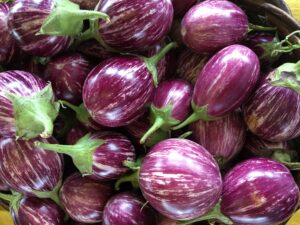Postharvest Produce Guide – Introduction
go.ncsu.edu/readext?919129
en Español / em Português
El inglés es el idioma de control de esta página. En la medida en que haya algún conflicto entre la traducción al inglés y la traducción, el inglés prevalece.
Al hacer clic en el enlace de traducción se activa un servicio de traducción gratuito para convertir la página al español. Al igual que con cualquier traducción por Internet, la conversión no es sensible al contexto y puede que no traduzca el texto en su significado original. NC State Extension no garantiza la exactitud del texto traducido. Por favor, tenga en cuenta que algunas aplicaciones y/o servicios pueden no funcionar como se espera cuando se traducen.
Português
Inglês é o idioma de controle desta página. Na medida que haja algum conflito entre o texto original em Inglês e a tradução, o Inglês prevalece.
Ao clicar no link de tradução, um serviço gratuito de tradução será ativado para converter a página para o Português. Como em qualquer tradução pela internet, a conversão não é sensivel ao contexto e pode não ocorrer a tradução para o significado orginal. O serviço de Extensão da Carolina do Norte (NC State Extension) não garante a exatidão do texto traduzido. Por favor, observe que algumas funções ou serviços podem não funcionar como esperado após a tradução.
English
English is the controlling language of this page. To the extent there is any conflict between the English text and the translation, English controls.
Clicking on the translation link activates a free translation service to convert the page to Spanish. As with any Internet translation, the conversion is not context-sensitive and may not translate the text to its original meaning. NC State Extension does not guarantee the accuracy of the translated text. Please note that some applications and/or services may not function as expected when translated.
Collapse ▲Introduction
This produce quality guide is intended to provide a quick visual reference to what constitutes high-quality fruits and vegetables. The Guide enables food hub managers and farmers to develop a mutual language to define the quality of produce expected, and how to provide and maintain optimum produce quality from farm to table. For farmers, whether produce is delivered to a food hub or sold direct to consumer through a farmers market or other outlet, this guide will provide the basic information needed to keep fresh produce at its highest quality after harvest. For the food hub manager, the guide can serve as a quick and reliable way to communicate with the farmer the expected quality of produce at delivery. Keep in mind that proper postharvest handling can only maintain produce quality; it cannot improve the quality of the product once harvested.
Poor-quality produce results in fewer repeat purchases and more landfill waste. It makes good economic sense to provide customers with a quality product they will appreciate and bring them back for more. There are certainly times when weather events or other circumstances result in less-than-perfect produce, and there is always room to educate the buyer and consumer on how the produce is still valuable. For example, sweet corn may need to have the tip removed to address corn earworm feeding, leaving plenty of good fresh corn for the consumer. The Guide is intended as a baseline and starting point for further discussion between farmers, buyers, and the consumer. I hope this information will help farmers and food hub managers in that process.
Paige Burns
November, 2022



